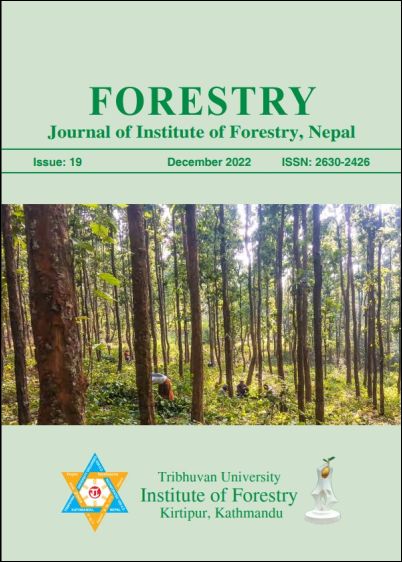Pathogenic fungi associated with economically important tree species in a planted forest in Ghorahi, Dang, Nepal
DOI:
https://doi.org/10.3126/forestry.v19i01.55707Keywords:
Diseased sample, Pathogen, Stratified random sampling, Forest diseaseAbstract
The structure and composition of healthy ecosystems, as well as the production and protection equations, are all influenced by forest diseases. This study was conducted in a planted forest in Ghorahi, Dang, Nepal, to document pathogenic fungi associated with economically important tree species, viz. Tectona grandis, Dalbergia sissoo, Eucalyptus camaldulensis, and Bombax ceiba. By using a stratified random sampling technique, a total of 10 quadrats, with a sample size of 20x20m, were located. Each plot was then divided into quadrats of 10x10m. The diseased samples were collected and brought to the laboratory. A total of 10 fungal pathogens were identified. Of them, eight pathogens were identified to species level and two to generic level. These 10 pathogens are Erysiphe tectonae (powdery mildew), Oliveatectonae (leaf rust), Alternaria alternata (leaf blight), Colletotrichum gloeosporioides (leaf blight), Cylindrocladium reteaudii (leaf blight), Fusarium sp. (dieback), Alternaria alternata (leaf blight), Fusarium solani (gummosis), Fusarium sp. (canker), and Maravalia achroa (leaf rust).
Downloads
Downloads
Published
How to Cite
Issue
Section
License
© Tribhuvan University, Institute of Forestry




